Why learn navigation? The case for a map and compass
Why learn navigation with the traditional tools of maps and compasses in a world of GPS-enabled tech and map apps? Let us explain...

Asking 'why learn navigation?' is reasonable, especially in 2025, when we can use all manner of digital tools to accurately pinpoint our location. In an age of Google Maps, easily accessible GPS technology, near ubiquitous phone signal and multiple navigation apps, plus easy and affordable travel routes, finding your way into remote places is easier and requires less time, resources, and experience than ever.
Ironically, this could actually be making exploration more risky, allowing adventurers to access potentially dangerous places that would have previously been much more challenging to reach. When the technology suddenly fails – and it does, especially in winter – people are suddenly left without the skills to effectively navigate their way out of trouble.
Besides the safety benefits of being able to effectively navigate with a topographical map and compass, it's also a wonderfully rewarding and fun skill to learn and practise, adding a whole other dimension to your outdoor exploits. So, next time you shoulder your hiking backpack, do so with the intention of adding to your nav skillset. Let's get into the reasons why you should...
Meet the expert
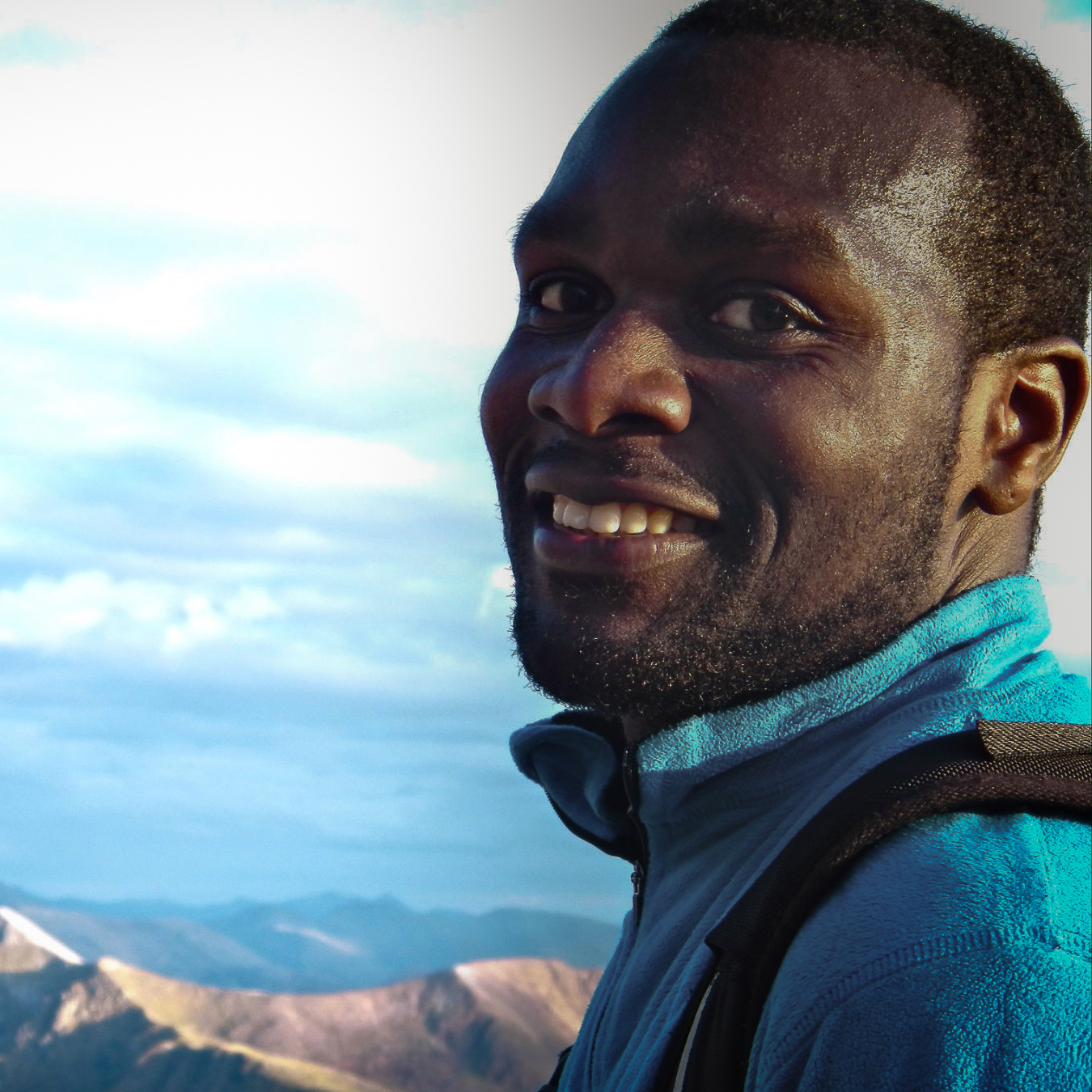
Dwayne's apprenticeship with the great outdoors changed the course of his life, taking him from the world of inner-London street gangs to becoming the first black Briton to walk over 400 miles to the magnetic North Pole. An expert navigator, here he makes the case for the traditional map and compass.
Today's best deals
Everyday adventurers
- Some outdoor environments should not be approached with complete reliance of power-dependent technology
- Batteries can run out, signal can be lost, electronic devices can fail
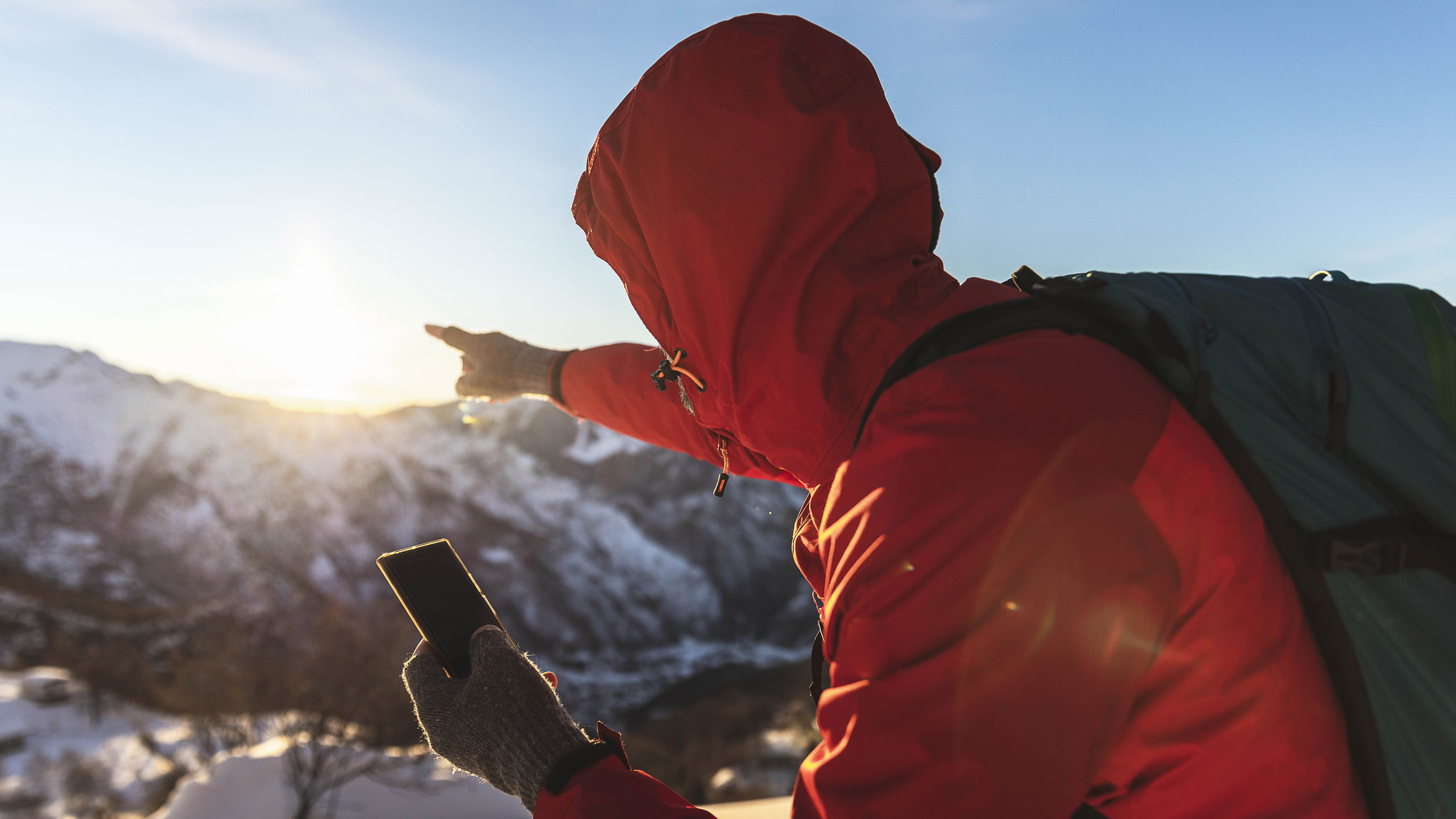
Previously the title ‘explorer’ was reserved for someone who had acquired an arsenal of skills through their experiences. Now anyone armed with a smartphone and a GPS watch can decide they’re an adventurer, regardless of their capability in the outdoors.
On one level that could be seen as a positive. The outdoors should absolutely be open and accessible to everyone, and any level of escapade in the wilderness is a bona fide adventure. But some skills are definitely worth having. And some places shouldn’t be approached flippantly, with complete reliance on power-dependent tech.
Of course, even the explorers of old had to start somewhere, and earn their experience somehow (and even then, many were defined more by their disastrous failures than their glorious successes). But we can be sure of one thing – when Roald Amundsen found his way to the South Pole, he wasn’t relying on battery powered devices and navigation apps to work out which way to go. Amundsen (along with his chief navigator, Helmer Hanssen) used a compass. And a sextant. And the sun, reflected in a tray of mercury.
Now, we’re not suggesting you pack a sextant or a bottle of mercury the next time you go for a walk on the wildside, but we do highly recommend you learn how to navigate with a map and compass, as well as availing of the wonderful technology now available to us. Because, as great as such gadgets are, they can fail. Batteries run out. Signal can be lost. And when that happens, a compass can get you home. If you know how to use it.
All the latest inspiration, tips and guides to help you plan your next Advnture!
Natural navigation
- Learning navigational skills is interesting and fun
- There are loads of natural navigational prompts out there
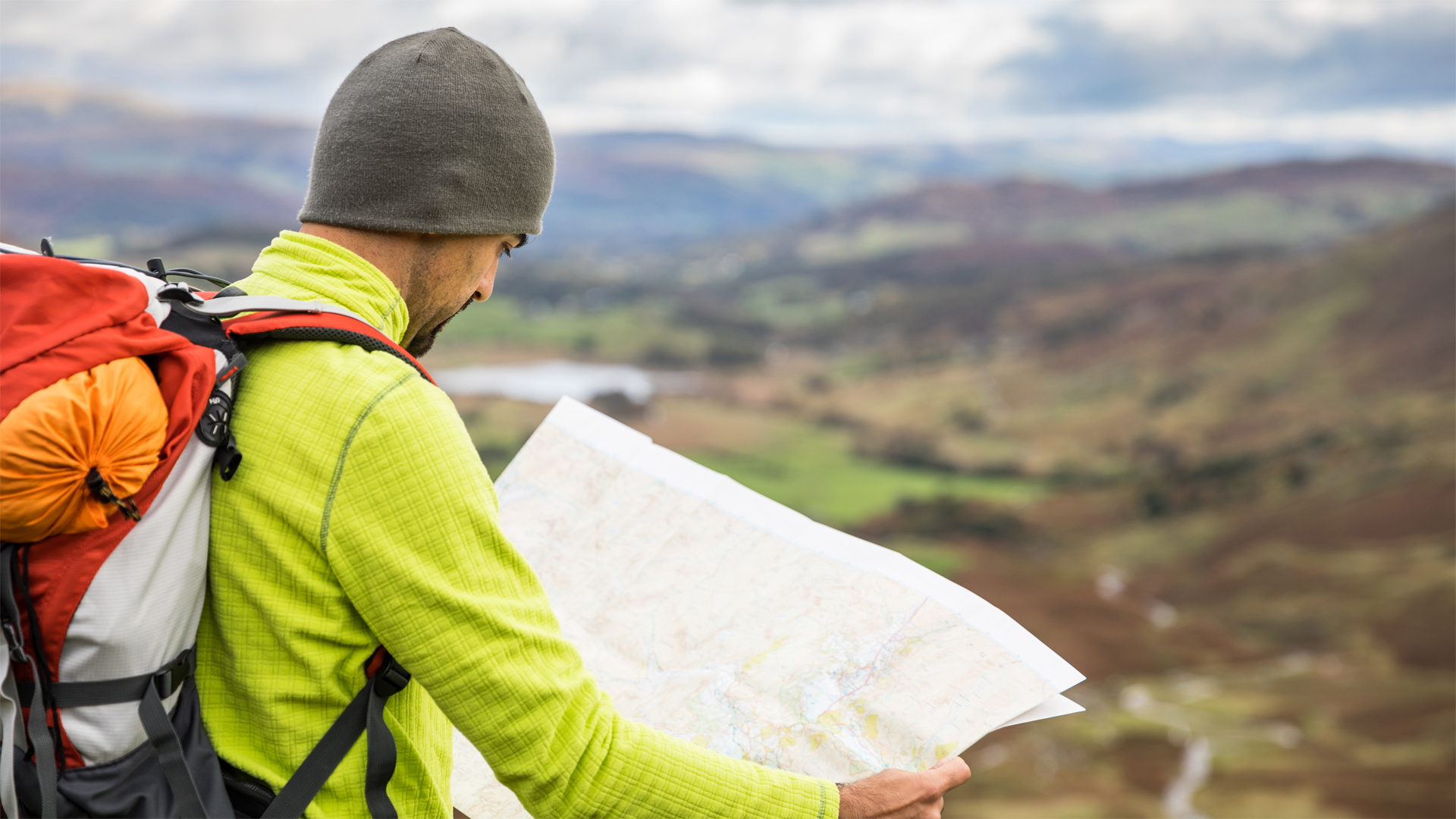
Besides being able to read a map and use a compass, having some rudimentary navigation knowledge based on nature is also a valuable asset, and something that might one day help you out of a tricky situation (or at the very least impress your fellow explorers). Simply being able to point out which way is east and which is west (and, by extrapolation, north and south) by observing where the sun is rising and setting is a start.
Or you could learn how to identify Polaris (the North Star), by lining up the two pointer stars in the easily identifiable Plough (Big Dipper) constellation. Polaris is the one celestial point in the northern hemisphere’s dark sky that appears to stay put all night, because it’s right above the North Pole, so you can be confident that if you walk towards it, you’re heading north.
You could go a step further and learn how to use your watch as a compass, but then again you probably swapped your analogue timepiece for a smartwatch with an actual digital compass on it ages ago. We won’t labour the point, but suffice to say, little pieces of natural navigation know-how are interesting as well as potentially lifesaving.
But it’s not just about safety. These skills – whether they’re with a map and compass, or based on nature’s signposts – also boost your confidence and enhance your enjoyment of the outdoors all at the same time.
A journey of a thousand miles begins with one step
- Learning everything to do with navigation can seem daunting
- Take it a step at a time – just learning the basics is incredibly useful
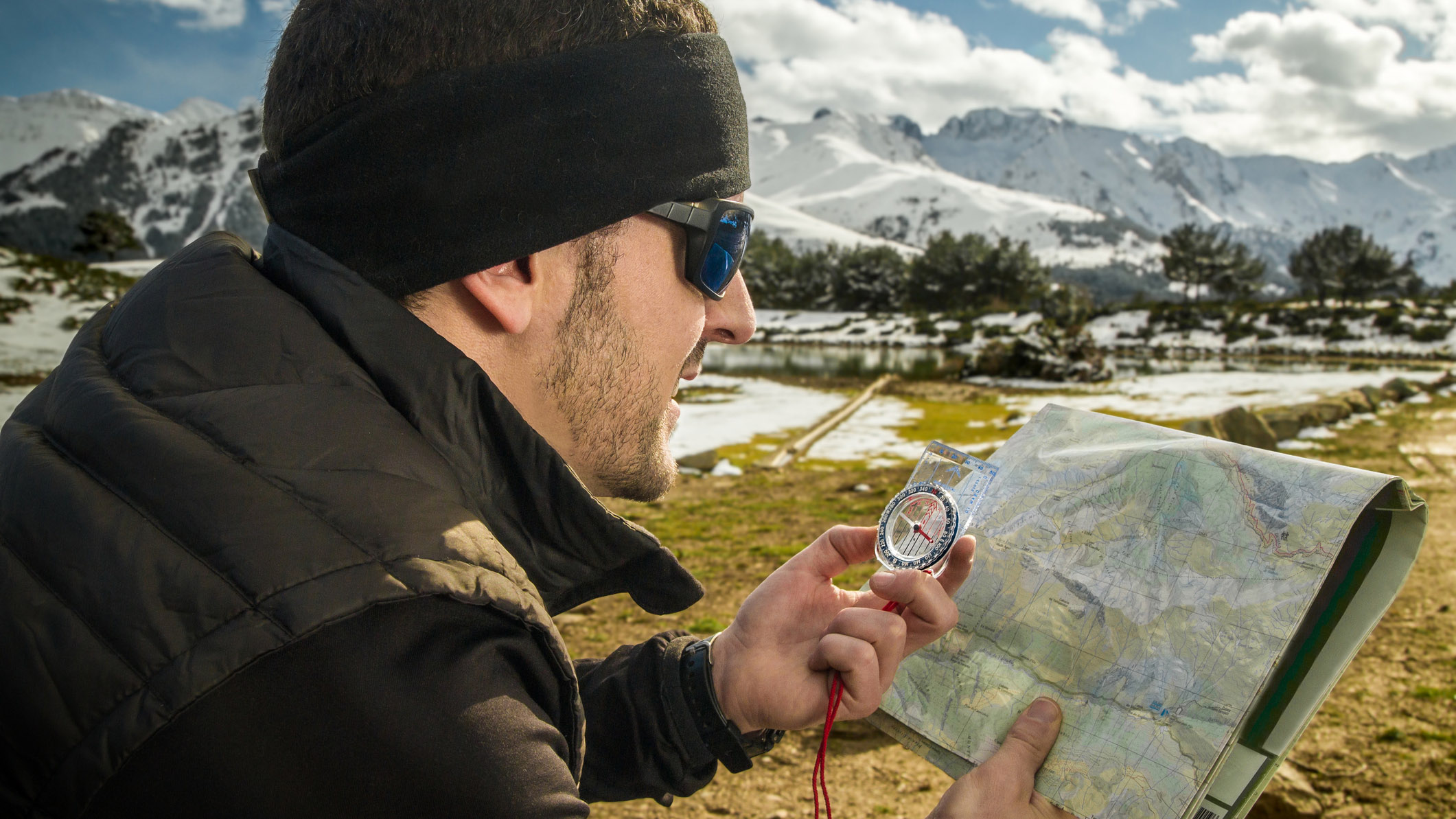
The prospect of learning how to navigate can seem daunting, and you may find yourself overwhelmed by the sheer variety of techniques and the perceived difficulty of using them to work out your direction of travel, so try to keep it fun – you are supposed to be engaged in a leisure pursuit, not a life-or-death brawl with the elements.
And let’s face it, most days you’re probably not attempting to reach one of the poles, traversing a cruel desert or hacking you way through a remote jungle, so don’t feel you need to absolutely master the art of steering via the sun, moon and stars before you dare go out the house.
Simply having some basic navigation skills – like the ability to read a topographical map, knowing how to orientate a map, or understand the basic working of a compass – is a good way of reducing risk and increasing your confidence and knowledge. But learn as you go, in areas that pose no real danger, such as parks with clear signage that you can fall back on if you do get lost, before putting those new skills to the test in the wilderness. As you become more confident, you can start to practise more advanced skills like taking a bearing.
Keeping it real
- Reliance on technology threatens to denude us of skills that have been in use for centuries
- The ability to garner information from a map and navigate effectively gives a well-placed sense of security while in the wild places
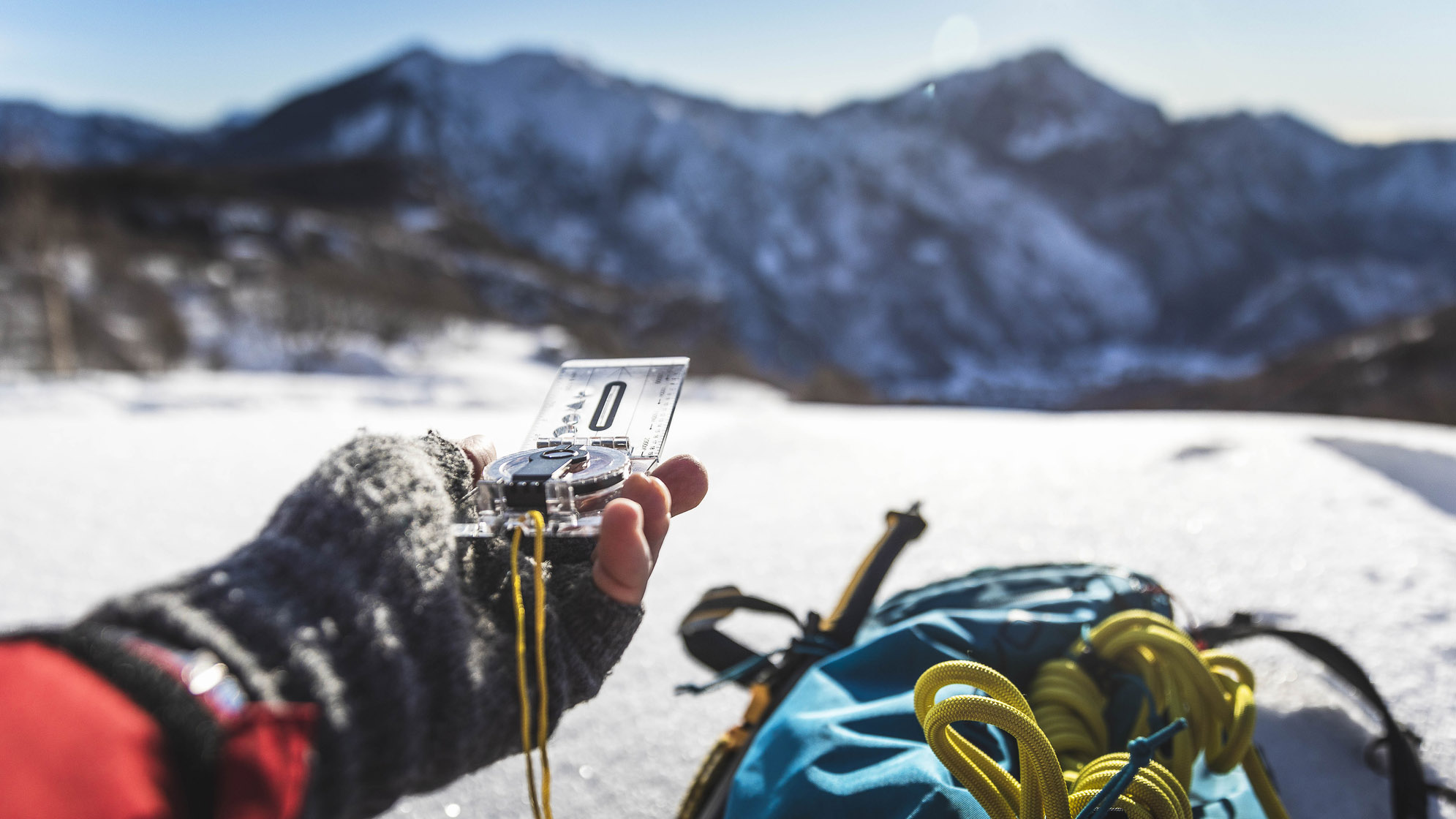
Our reliance on technology is understandably growing, with our devices becoming smarter, smaller, and more interactive by the day. Learning how to best use these superb tools is all part of our evolution as explorers, but complete dependence on technology threatens to denude us of skills that have been in use for centuries (probably millennia, in the case of natural navigation).
The search for excitement and adventure should be an enjoyable one. Possessing the ability to read the lay of the land, and having the confidence to transverse it safe in the knowledge that – should your electronic devices fail, and contact with the outside world be lost – you would still be able to navigate your way back to safety with nothing more than a map and compass, is a good way to ensure the fun factor isn’t lost.
Garner information from a map, and then attributing that info to your physical location (or vice versa) is a great way to dispense with many of the anxieties linked to going into the outdoors, because being able to find our way around is fundamental to feeling a sense of freedom, as well as security. Not having that ability can leave us feeling vulnerable and exposed, at a time when we should be enjoying the environment and taking in all the beauty around us.
Dwayne came to the UK aged six and spent his formative years in inner-city London where, wrapped up in the world of street gangs, he became a victim of both knife and gun crime. After a life-threatening incident, Dwayne decided to change his life and reconnect to nature and the outdoors, which he’d enjoyed in his early life in the forests and hilltops of rural Jamaica. In 2010, Dwayne successfully set out to become the first black Briton to walk over 400 miles to the magnetic North Pole. Ever since he has lived a life of adventure and exploration, inspiring young people nationwide to explore the ‘great outdoors’ which has earned him the City of London’s highest honour, the Freedom of the City.
